A small row of four detached houses in the heart of Dublin 4's Sandymount is home to some of the finest properties in this most coveted of city suburbs. Located on leafy Park Avenue, each handsome detached Edwardian sits on a huge site of about 0.7 of an acre, and has a vast west-facing rear garden running all the way down to the Dart line.
Number 81 has attracted its share of interest down the years. Most recently in 2004 it was purchased by accountant and former property developer John Pugh, who made headlines after he bought the property at auction for €7.1 million (above a Lisney guide of €6 million) making it the highest price paid for a Dublin house at auction that year.
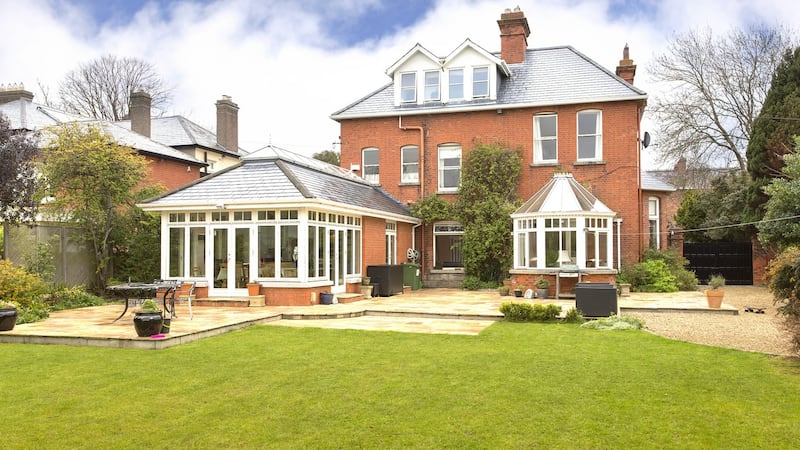
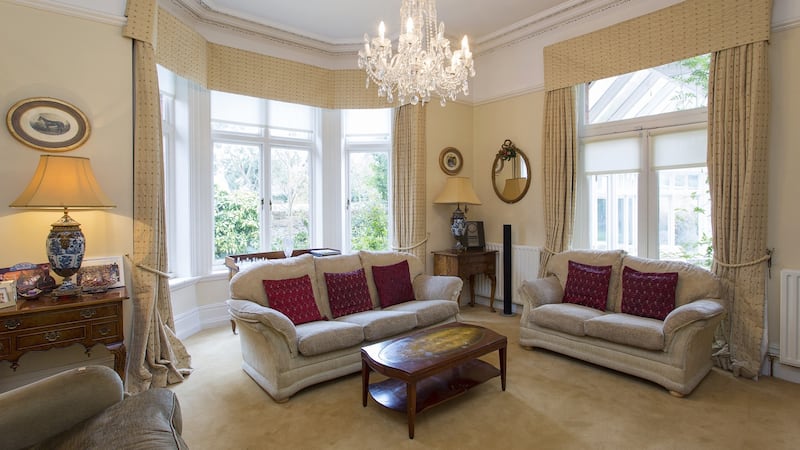
Prior to that, the five-bed was the home of the late Fianna Fáil senator and businessman Eoin Ryan, who lived there with his family for over 40 years. Ryan's grandfather was James Ryan, a founding member of Fianna Fáil and a long-serving cabinet minister.
His son, also Eoin, was an MEP until 2009. Ironically enough for a bastion of soldiers of destiny, that number 81’s official name still engraved on the gate pillar – is Sandringham, presumably a modest reference to the Norfolk residence of the British Royal family.
The name, which hasn’t featured too prominently in the property’s more recent marketing literature, probably sat better with the original owner who purchased the 320sq m (3,400sq ft) property in 1925.
Dr Lorcan Sherlock was a former lord mayor of Dublin and prominent socialite of the era. He was a golf professional, keen on horse racing and cricket, and served as director for a number of high-profile firms.
Distinctive detail
Certainly Sandringham is a townhouse originally built for formal entertaining. Its large, welcoming hallway retains its distinctive stained-glass detail on the front door panels and original encaustic tile floor – a rare vestige of a grander era that often doesn’t survive the test of time in these period homes.
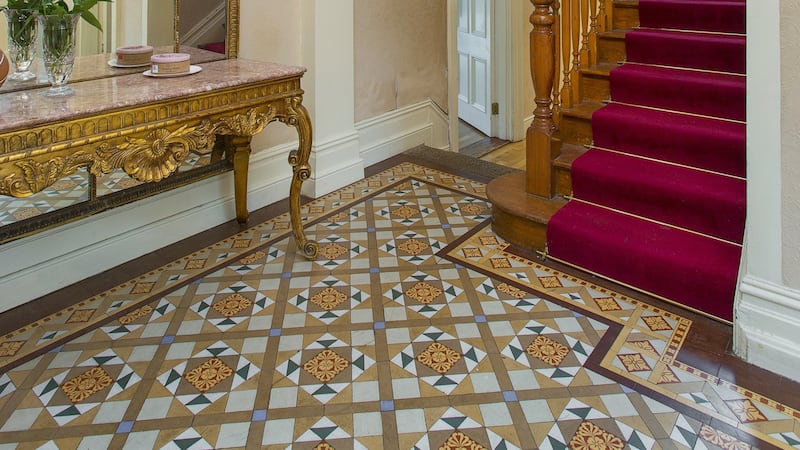
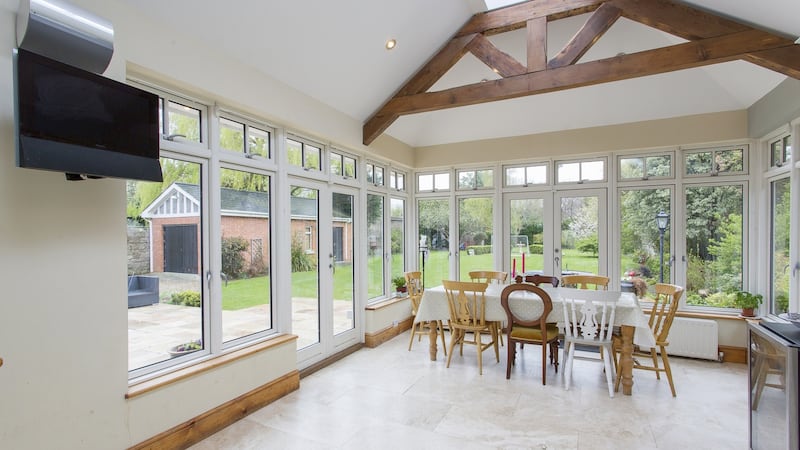
The main reception rooms open off the hallway, including two large interconnecting formal receptions, the drawing and dining rooms, both of which have elegant cornicing and fine bay windows. Double doors connect the drawing room to a large conservatory with quarry tiled floor and French windows leading out to the garden.
Across the hall is a sitting room and a comfortable family room that links to the roomy rear kitchen. A lovely bright space thanks to a pitched ceiling and feature skylight running its length, it was refurbished in recent years and has a polished granite island at its heart and gas-fired Aga and Neff oven. At the end is a sunroom type extension with access to the rear garden.
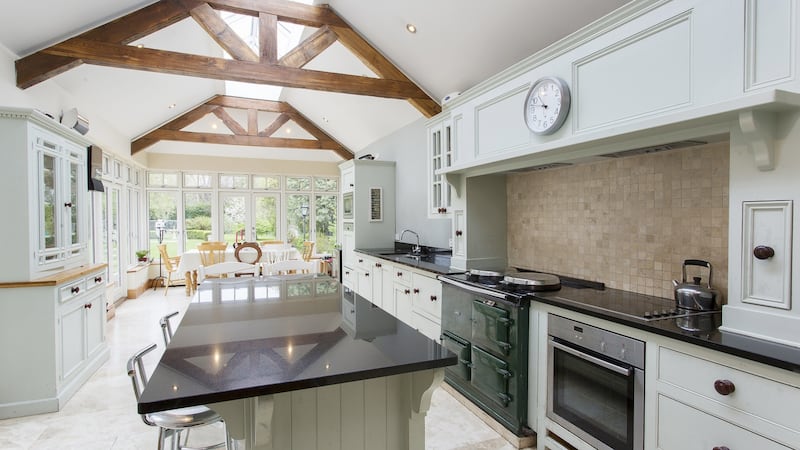
As is the style in these properties, a number of service rooms extend from the kitchen including a utility room, inner lobby, and a cloakroom.
The original fine staircase leads to the upper floors, with a bedroom and bathroom on the first landing, three more bedrooms on the first floor and a fifth bedroom with bathroom located on the top floor.
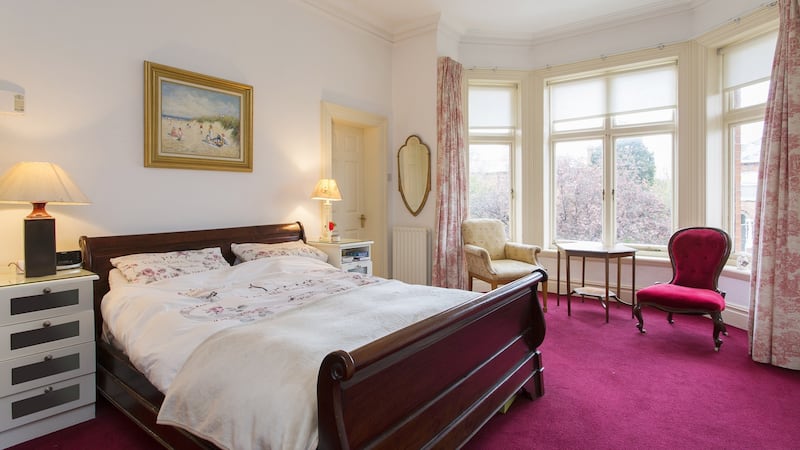
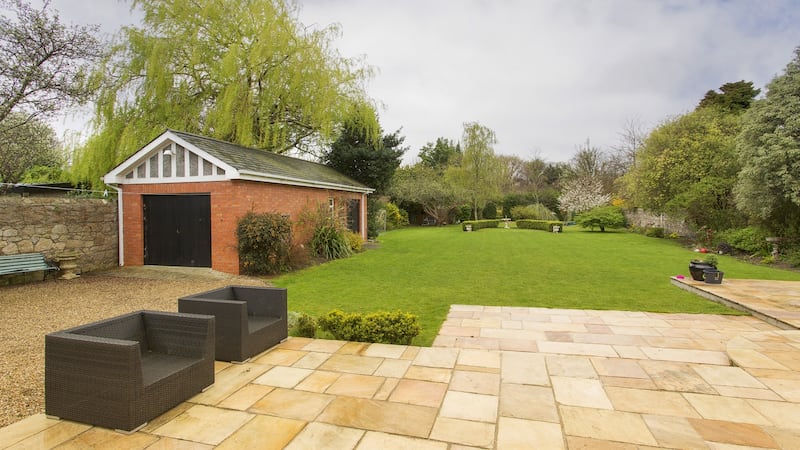
For all its grandeur – and it retains many original features in good condition – the real star attraction of this property is its garden. Approached via electric gates, a smart horseshoe-shaped gravel driveway fronts the property, and there is vehicular access via a side gate to the rear of the property where the scale of the garden fully unfolds. Running around 350ft in length to the Dart track, it’s of a size unheard of in an area that is otherwise fairly densely developed.
Vast garden
Despite the access to and size of the garden it’s unlikely the property would have any significant developer appeal as it would be unlikely to get planning permission in such a developed residential area.
The eventual purchaser of the property is likely to want to carry out their own upgrades to the house and they will almost certainly take advantage of the vast garden to extend given that it would have very little impact on a garden of this scale. The kitchen sunroom and conservatory could well be replaced with a contemporary living/dining/kitchen area spanning the width of the rear of the house.
Number 81 came on the market briefly two years ago and at the time was seeking about € 4 million but was withdrawn soon afterwards. Since then, Lisney has clearly decided the property is worth 15 per cent more with the asking price now set at € 4.6 million.
Along with Sandringham, Mr Pugh was also involved during the recent property boom in several other high-value acquisitions in the Dublin 4 area. These include Castleville, the landmark pink castellated house on Sandymount Green, purchased for € 2.25 million in 2006, and sold again in autumn 2015 for € 1.67million; and numbers 78 and 80 Merrion Road, a former guesthouse along with two separate mews properties to the rear, which sold in April 2015 for a total of €5.5 million.
Park Avenue runs from Sydney Parade Avenue into Sandymount Village and properties don’t change hands all that often on this stately tree-lined road.
The most recent sale was that of number 76 which sold in May for €3.128 million. The refurbished semi-detached property was slightly larger with 332sq m (3,573sq ft) of floor space, but it sat on a significantly smaller 0.25 acre site.













